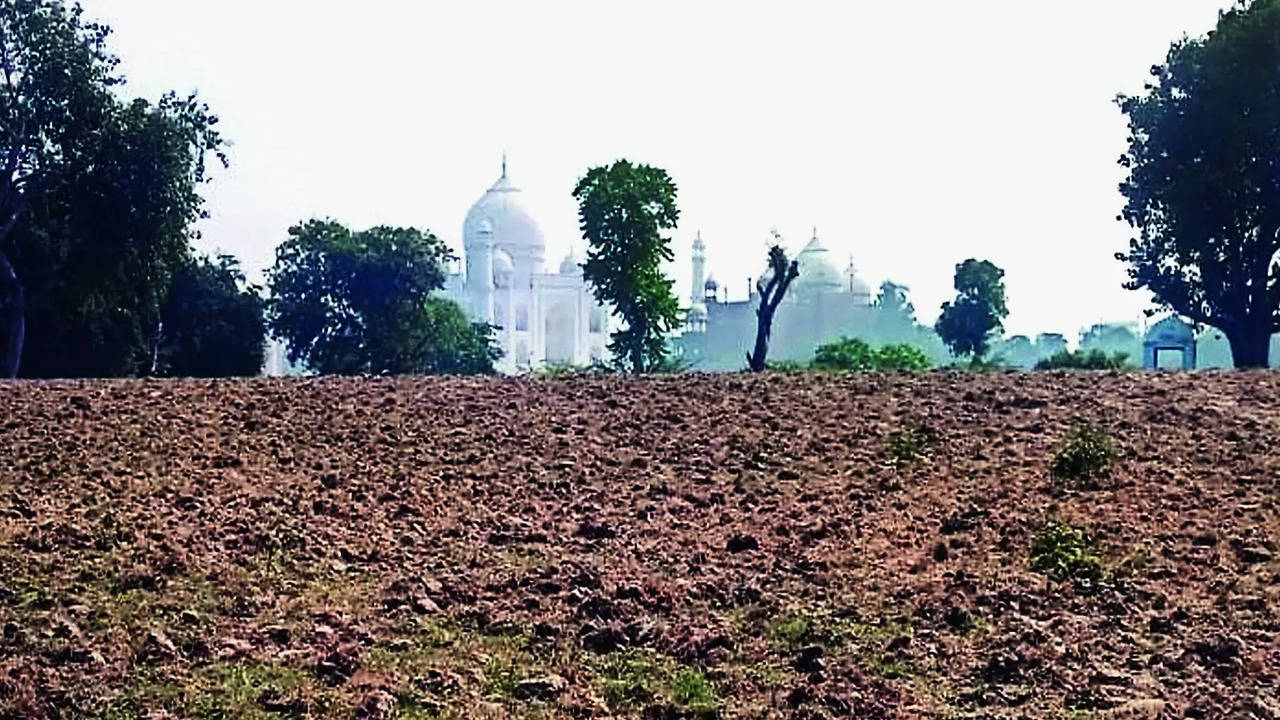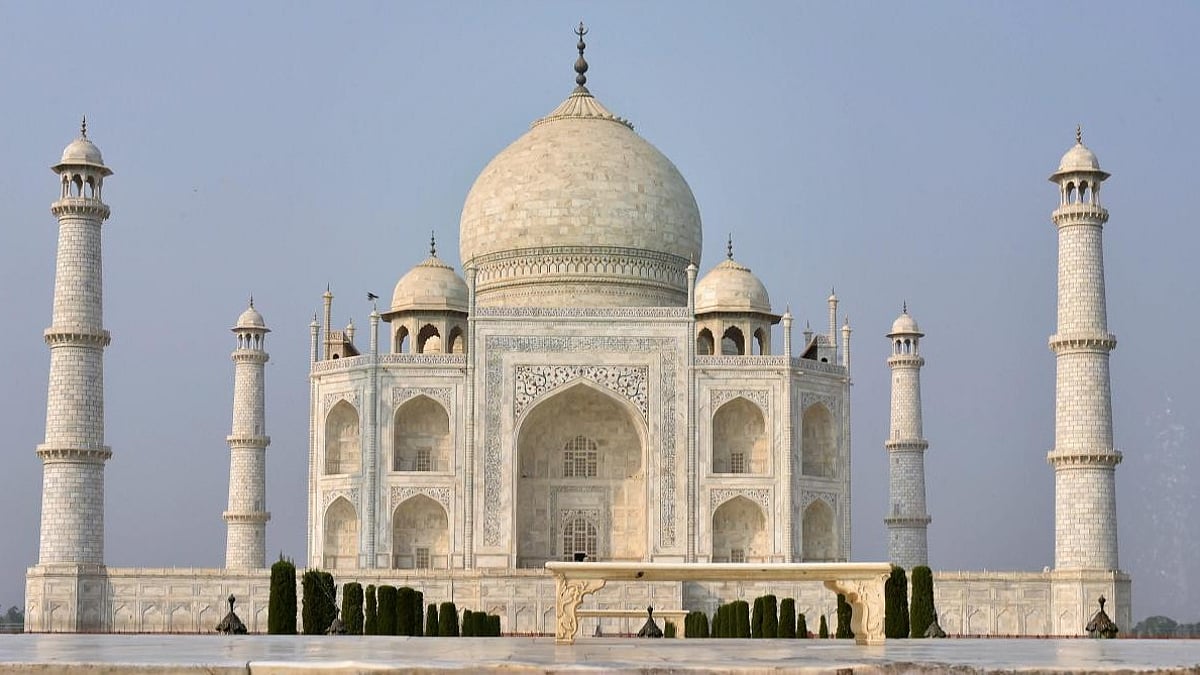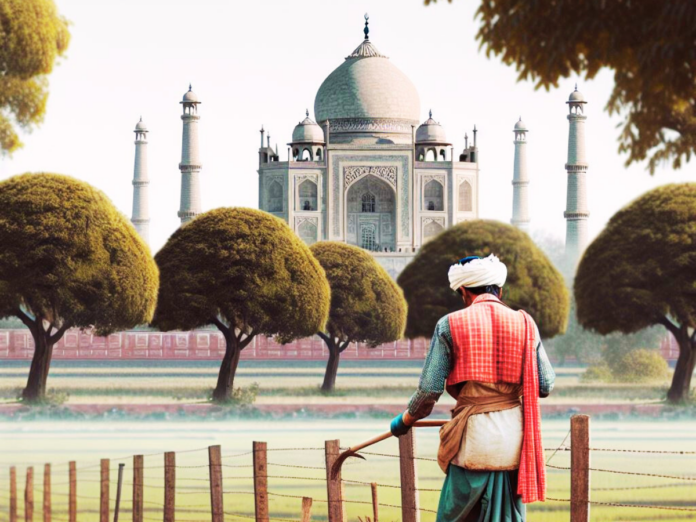Ownership Claim Sparks Access Restrictions
A dispute over Agra’s Gyarah Sidi Park, a premier spot for sunset views of the Taj Mahal, has ignited controversy as a local farmer, Munna Lal, claims a section of the park as his ancestral property. Munna Lal, a farmer from Kachpura village, has asserted that approximately six bighas (2.4 acres) within the park rightfully belong to his family. After a 40-year legal battle, he says he won ownership in 2020, receiving confirmation through district court documents that list him as the land’s owner. Taking physical control, Lal has fenced off the disputed area, limiting public access to the renowned vantage point, raising questions about rightful ownership, public access, and governmental responsibility.
A Landmark Park with a Legacy.
Perched along the Yamuna River and opposite the iconic Taj Mahal, Gyarah Sidi Park offers visitors a unique vantage point for breathtaking sunset views over the famed marble mausoleum. The park has not only become a tourism hotspot but holds historical significance, reputedly linked to Mughal emperor Humayun, who is said to have used the grounds as an observatory. In recent years, the Agra Development Authority (ADA), which manages the park, has invested in the area’s development, holding major events like the annual Taj Mahotsav and past concerts by international musicians, all to promote Agra as a cultural destination. However, Lal’s recent actions challenge the ADA’s authority over the space, potentially altering the park’s future role in Agra’s tourism.

Decades of Legal Dispute Come to a Head.
Munna Lal’s claim is backed by extensive court documentation. According to Lal, his family’s ownership dates back generations, with his father and uncle cultivating the land long before it was sealed by local authorities in 1976. Since then, the land was recorded under a different ownership until a protracted legal battle finally returned the title to Lal’s family in 2020. The 1998 and 2020 district court rulings appear to confirm Lal’s claim, and local revenue records now list the property under his name. “My family has fought for this land for decades,” Lal asserts. “The court orders and legal documents prove our ownership. The Sub-Divisional Magistrate confirmed this, and it’s now recorded officially.”
Following his victory, Lal quickly took steps to assert his rights, fencing off his land and placing barricades to restrict public entry. Lal’s actions have not gone unnoticed, with local authorities, tourists, and the ADA expressing concerns over restricted access to the prime viewing location.
Local Authorities Step In To Resolve The ‘Taj View’ Issue.
The ADA has voiced concern over Lal’s move, emphasizing the park’s importance as a public space and the disruption that could result if access remains limited. Divisional Commissioner of Agra, Ritu Maheshwari, affirmed that the area falls within ADA’s jurisdiction, and an investigation is underway. “We are looking into the issue thoroughly,” Maheshwari said. “The park is a public space, and we need to ensure that visitors’ flow is uninterrupted and legal aspects are addressed properly.”
As the authority responsible for Agra’s urban planning, the ADA has been enhancing the park as a key element in Agra’s cultural landscape. Not only does the dispute endanger tourism and local commerce, but it also challenges the ADA’s ongoing developmental projects for the area, which include transforming Gyarah Sidi Park into a full-fledged cultural and entertainment center.
Public Reaction: Who’s Right and Who’s Wrong?
The public’s response has been varied, with many tourists disappointed by the restricted access to the sunset view. On one hand, locals and tourists alike feel frustrated by the loss of public access to a space so integral to Agra’s tourism and local identity. Tour Guide Federation of India’s National General Secretary, Shakeel Chauhan, commented on the impact, “At sunset, this place is packed with people trying to catch a glimpse of the Taj Mahal. This new controversy has raised questions about access, which is key for tourism here.”
On the other hand, Lal’s supporters argue that his family’s perseverance in their legal battle entitles him to exercise his ownership rights. They claim that Lal’s actions are justified, as the land was always part of his family’s legacy and its confiscation in 1976 was an infringement on his rights.

The Government’s Next Steps.
The Agra Development Authority’s role now is central to resolving this issue. While Munna Lal holds documentation supporting his claim, the ADA may consider negotiating a compromise to allow public access to this critical part of the park without infringing on Lal’s ownership rights. Creating a visitor-friendly arrangement, such as a lease or an access agreement, could ensure tourists can enjoy Gyarah Sidi Park’s scenic views while respecting Lal’s property rights. The ADA may also explore compensation or land swaps as a possible solution.
As the case proceeds, both tourists and the local community are left waiting to see how the ADA balances Munna Lal’s legal ownership with public interest.

